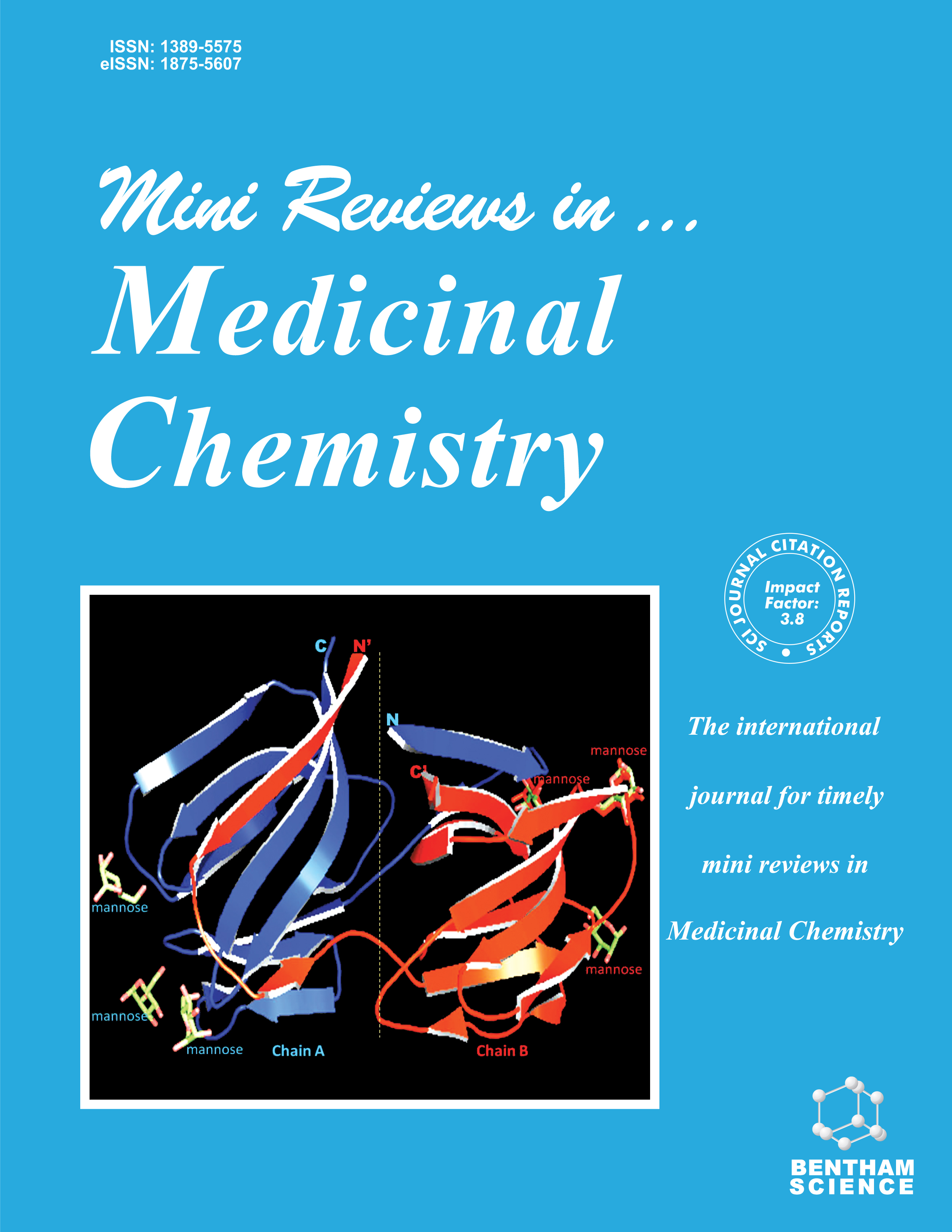- Home
- A-Z Publications
- Mini Reviews in Medicinal Chemistry
- Previous Issues
- Volume 24, Issue 8, 2024
Mini Reviews in Medicinal Chemistry - Volume 24, Issue 8, 2024
Volume 24, Issue 8, 2024
-
-
Roles of lncRNA-MALAT1 in the Progression and Prognosis of Gliomas
More LessAuthors: Yu-Long Ji, Kai Kang, Qiao-Li Lv and Da-Peng WangLong noncoding RNAs (lncRNAs) represent a large subgroup of RNA transcripts that lack the function of coding proteins and may be essential universal genes involved in carcinogenesis and metastasis. LncRNA metastasis-associated lung adenocarcinoma transcript 1 (lncRNAMALAT1) is overexpressed in various human tumors, including gliomas. However, the biological function and molecular mechanism of action of lncR Read More
-
-
-
The most Recent Compilation of Reactions of Enaminone Derivatives with various Amine Derivatives to Generate Biologically Active Compounds
More LessHeterocyclic derivatives serve as the fundamental components of both natural and synthetic drugs. Enaminones play a crucial role as foundational units in the synthesis of numerous bioactive heterocyclic compounds, including pyrazoles, pyridines, oxazoles, isoxazoles, as well as fused heterocyclic structures like indoles, carbazoles, quinolines, acridines, and phenanthridines. These diverse heterocyclic rings are well-kno Read More
-
-
-
Antimicrobial and Cytotoxic Naphthoquinones from Microbial Origin: An Updated Review
More LessNaphthoquinones (NQs) are small molecules bearing two carbonyl groups. They have been the subject of much research due to their significant biological activities such as antiproliferative, antimicrobial, anti-inflammatory, antioxidant, and antimalarial effects. NQs are produced mainly by bacteria, fungi and higher plants. Among them, microorganisms are a treasure of NQs with diverse skeletons and pharmacological prop Read More
-
-
-
Purinergic Signaling and its Role in the Stem Cell Differentiation
More LessAuthors: Sumera Zaib, Areeba and Imtiaz KhanPurinergic signaling is a mechanism in which extracellular purines and pyrimidines interact with specialized cell surface receptors known as purinergic receptors. These receptors are divided into two families of P1 and P2 receptors, each responding to different nucleosides and nucleotides. P1 receptors are activated by adenosine, while P2 receptors are activated by pyrimidine and purines. P2X receptors are lig Read More
-
Volumes & issues
-
Volume 25 (2025)
-
Volume 24 (2024)
-
Volume 23 (2023)
-
Volume 22 (2022)
-
Volume 21 (2021)
-
Volume 20 (2020)
-
Volume 19 (2019)
-
Volume 18 (2018)
-
Volume 17 (2017)
-
Volume 16 (2016)
-
Volume 15 (2015)
-
Volume 14 (2014)
-
Volume 13 (2013)
-
Volume 12 (2012)
-
Volume 11 (2011)
-
Volume 10 (2010)
-
Volume 9 (2009)
-
Volume 8 (2008)
-
Volume 7 (2007)
-
Volume 6 (2006)
-
Volume 5 (2005)
-
Volume 4 (2004)
-
Volume 3 (2003)
-
Volume 2 (2002)
-
Volume 1 (2001)
Most Read This Month
Article
content/journals/mrmc
Journal
10
5
false
en


